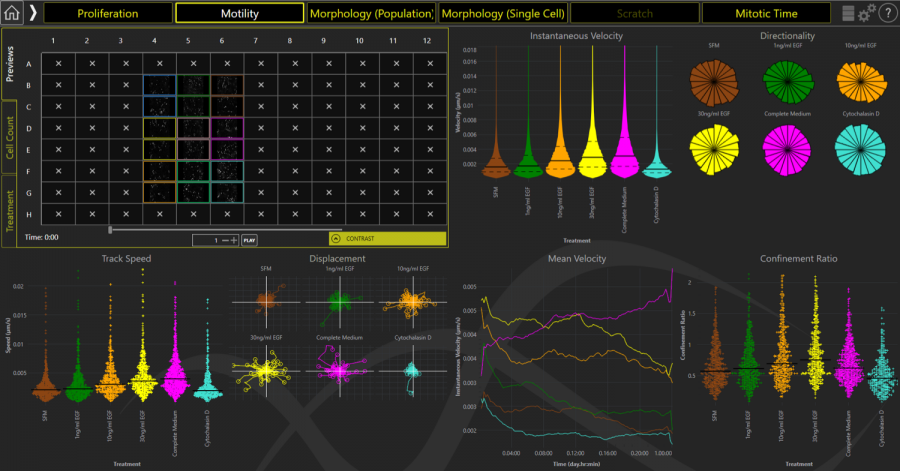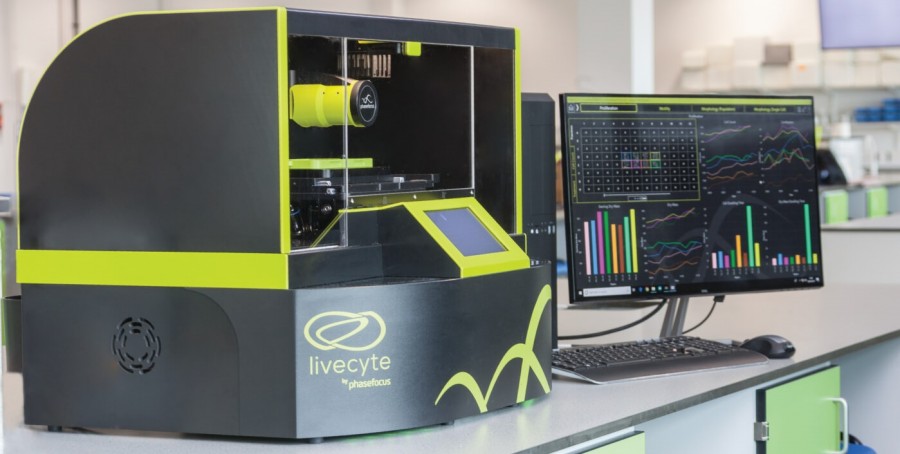Shaping endothelial research with the Phasefocus Livecyte at the University of Nottingham
13/05/2024

Representative image of the Livecyte's Cell Motility Dashboard. Image analysis, cell segmentation and tracking data across multiple wells are automatically curated into tangible cell migration metrics.
The kinetic cytometer has been used by the Centre of Membrane Proteins and Receptors to observe angiogenesis
The Livecyte by Phasefocus is being used by the University of Nottingham at its Centre of Membrane Proteins and Receptors (COMPARE) to noninvasively monitor the morphological phenotype and behaviour of immortalised endothelial cells. As fluorescent labels can perturb the natural behaviour of cells, the Livecyte is an excellent instrument for cell research because it uses ptychographic quantitative phase imaging (QPI) for label-free assays.
Comparing the behaviour of endothelial cells to HUVEC cells
Assistant Professor at the School of Pharmacy Dr. Laura Kilpatrick is investigating if endothelial cells behave similarly to human umbilical vein endothelial cells (HUVEC), and that genetic mutation was not altering their phenotype. A hallmark of the endothelial phenotype is their ability to form new blood vessels in a process called angiogenesis.
The Livecyte can observe angiogenesis and analyse network formations, label-free in real time. Dr. Kilpatrick said, “We chose the Livecyte as it is label-free and can follow the course of tube formation over many hours, in a fully controlled enclosed environment. In regard to vessel formation, the multiple parameters are advantageous, such as node and networks, and you can export the overlay of the analysis with the image.”

“Livecyte is incredibly easy to use.”
The Livecyte assesses and compiles several behavioural parameters in addition to angiogenesis in the form of dashboards to give a correlated view of the assay. Dr. Kilpatrick said, “Livecyte is incredibly easy to use, both for the instrument itself and the built-in real-time analysis, which gives a wide range of parameters that you can quickly filter yourself. Livecyte required minimal training, the interface is very intuitive, and being able to remote access the system is a huge advantage.”
As a result of using the Livecyte to conduct angiogenesis assays, the research was able to confirm that the genetically altered cell lines still possessed the same endothelial phenotype and functionality as that of primary cells. Dr. Kilpatrick said, “I wouldn’t hesitate to use it again in my research when appropriate and have already recommended the instrument to colleagues who I think it would be of use in their research.”
Find out more
You can read Dr. Kilpatrick’s published research, Probing expression of E-selectin using CRISPER-Cas9-mediated tagging with HiBiT in human endothelial cells, by clicking here.
You can learn more about the Phasefocus Livecyte by clicking the button below to speak to a product specialist directly.